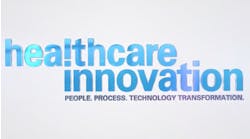IT is not the only thing on the move. As the health industry moves toward accountable care, healthcare reform forces new efficiencies. As consumers become more engaged in the healthcare process than ever, providers are working to manage increased risk and positively impact the patient care outcomes of large populations. The opportunities are rich – but the penalties are harsh.
For example, in October 2012, the Centers for Medicare and Medicaid Services (CMS) established the Hospital Readmissions Reduction Program, reducing payments to hospitals with excessive 30-day readmissions for acute myocardial infarction, heart failure, and pneumonia. For FY 2015, CMS has proposed the addition of two new conditions: chronic obstructive pulmonary disease and total hip arthroplasty/total knee arthroplasty – with a suggested maximum penalty for readmissions of three percent.
To successfully reduce readmissions, providers need new advanced analytics/predictive modeling capabilities that most do not have today.
The real cost of readmissions
The expense associated with readmissions has become an issue on its own: the readmission of Medicare patients in 2013 alone costs well over $20 billion[1]. As a result, the reaction from hospital executives – the key IT stakeholders – has been swift, as they search for analytics tools that can forecast penalty risk.
Until now, healthcare IT organizations have been steadily moving along a maturity curve – from historical reporting from disparate data sources to more advanced business intelligence capabilities. Traditional Business Intelligence (BI) provides executives with retrospective capabilities, but does not include the predictive analytics capabilities needed to calculate and mitigate future risk. Risk mitigation and performance prediction require new skills, technologies, third-party data, and an agile capability to optimize performance-related patient outcomes.
The next level of sophistication is advanced analytics, which provides predictive capabilities to answer “Why?” and “What will happen next?”
Due to accountable care risk demands, providers are working to adopt advanced analytics at an accelerated pace. At the high end of BI capabilities, advanced analytics are loosely defined as moving beyond basic BI capabilities toward forecasting and predicting future outcomes.
What exactly can healthcare IT organizations do with the benefits of advanced analytics?
- Prioritize – Which conditions should be targeted for readmission prevention?
- Target – Identify patients who are at risk on a daily basis, but also determine those who are most open to readmission prevention;
- Initiate – Move from a reactive model to a proactive readmission prevention model;
- Customize – Care isn’t one-size-fits-all. Provide individualized readmission prevention services;
- Analyze – What works and what doesn’t?
Healthcare IT departments must pull all of the fragments of data together across a wide variety of disparate legacy systems. These efforts are complicated by the number of acquisitions and consolidations across the industry. Most providers have one or more Electronic Medical Record (EMR) systems, a host of legacy applications, and the need to integrate third-party data (comparative performance measures, public health data, research partners, etc.).
Beyond hospital walls
Reducing hospital readmissions and incorporating advanced analytics requires collaboration – enter Big Data. Big Data is more than large volumes of data; it is a new set of technologies and techniques that support the processing of large volumes of different types of data for analytic insight that was not possible a few years ago.
Big Data can be characterized by four “V”s:
- Variety – Most of the world’s data is unstructured. Big Data technologies allow the analysis and joining of data of different types (files, images, voice notes, etc.)
- Volume – Vast amounts of data are generated every second. Not talking Terabytes – but Zettabytes or Brontobytes;
- Velocity – The speed at which new data is generated and the speed at which data moves around;
- Value – Organizations are able to use analytics from Big Data technologies and generate real results.
Data science and predictive models
Many organizations are taking a new approach to advanced analytics based on data science. Data science is an emerging discipline to mine insights from Big Data. Harvard Business Reviewrecently named data scientist as the “sexiest career of the 21st century.” Data science includes, but is not limited to, the ability to: ensure consistency of datasets, create visualizations to aid in understanding data, and build models that, for example, score patients on their likelihood to readmit or provide comparative effectiveness research in order to identify the most effective therapies.
What role does Affordable Care Act play?
The Affordable Care Act (ACA) does more than expand the coverage of health insurance. Plans to help slow the growth in health costs across the United States are woven into the structure as well, furthering efforts to incorporate cost-reducing practices such as advanced analytics. One of its first targets: the reduction of readmission rates.
In 2012, when the ACA’s reforms focused on reducing avoidable readmissions kicked in, the all-cause 30-day hospital readmission rate among Medicare fee-for-service beneficiaries began to fall. Healthcare executives have attempted to keep up.
Given the ACA readmission penalties, using predictive models to impact readmissions is a popular use case. Advanced analytic models look at patient demographic, EMR and lab data, intake characteristics, and third-party and publicly available data feeds to score each patient on the likelihood to readmit. Third-party data might include charts from other healthcare providers in the network, for example an outpatient physical therapy center or a pharmacy. Public data feeds might include the results of research studies from the National Institutes of Health (NIH) or other organizations that provide national averages against which providers can benchmark an individual patient. The patients with the highest scores become the focus of additional evaluation for different care pathways and other specialized post-discharge care plans. The cost of these plans, the efficacy history, and outcome performance are factored into the decision to invest in higher touch care options.
Early readmissions (those that happen in the first three to five days after discharge) are significantly associated with the process of inpatient care [2]. However, readmissions that occur during longer time frames are more likely to be associated with the quality of post-acute and outpatient follow-up care.
As providers continue to refine their analytic models, they are reaching out to third-party data sources, such as the NIH, text analytics for physician notes and discharge summaries, as well as social media to improve the performance of their first-generation models.
The real test: Improving outcomes
One home healthcare provider uses advanced analytics to identify their highest risk patients. They send a specially trained pharmacist into the homes of the highest risk patients within 48 hours of discharge and the pharmacists provide support specifically focused on preventing unnecessary admissions/readmissions. The average high risk patient has multiple co-morbidities, several prescriptions, and may have environmental issues that traditional healthcare providers miss. They are trained to identify and mitigate the most pressing risks for readmission, including:
- Medication adherence, reconciliation, and optimization;
- Chronic illness and red flag management;
- Home safety;
- Coordination of resources.
Eighty to ninety percent of their enrolled patients have a medication issue and the average patient engagement has six medication interventions. The reduction in readmissions has averaged more than 35 percent for those high risk patients enrolled in the program. Their care management services can be provided as an extension of services offered by payers and providers for patient follow up in the home and also in conjunction with existing care management services.
Denver Health is partnering with EMC to create and optimize ESRT (Epidemiology Surveillance Reporting Tool) as part of its advanced analytics toolset. ESRT enables monitoring, tracking, and predicting of certain healthcare metrics at three levels: population health within Denver County, patient health within the Denver Health organization, and drilldowns into individual Denver Health patient details. Source data integration includes Denver Health’s own EMR, the U.S. Census Bureau, and numerous state and county data sources. Using ESRT, Denver Health resources can more accurately identify and track potential disease outbreaks with an eye toward appropriately allocating its staff, treatment supplies, and temporary clinic equipment to locations of greatest need.
Looking forward
The negative impacts of readmission are all too clear – potentially serious health risks for patients, added expense, and increased strain on the hospital system. But what’s even clearer is that the best way to tackle this issue is for healthcare providers to take a proactive approach. While there are many challenges, providers have tremendous opportunity to proactively acquire the technology and skills to support predictive analytics for reducing readmission, clinical decision support, resource allocation, and patient behavior applications. Without predictive analytics capabilities, organizations increase the risk of penalties/dis-incentives that could undermine their viability and increase the likelihood of being acquired by larger/more advanced competitors. Taking steps now to build these capabilities will be critical as providers manage risk, contain costs, and positively impact patient care outcomes into the future.
1. Lavizzo-Mourey, R. (2013). The Revolving Door: A Report on U.S. Hospital Readmissions. 3. Retrieved from http://www.rwjf.org/content/dam/farm/reports/reports/2013/rwjf404178


